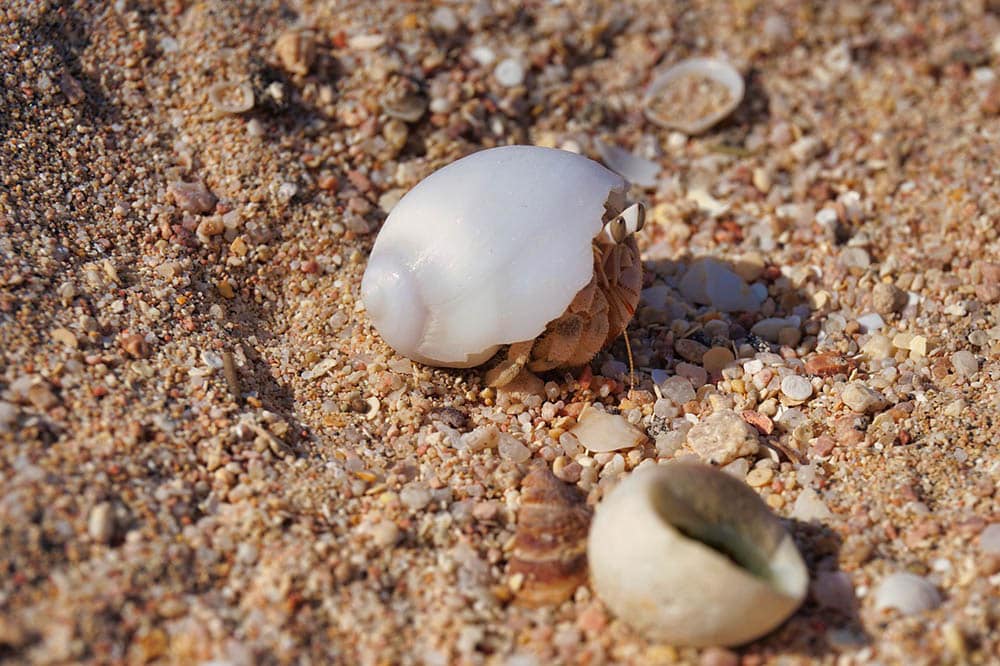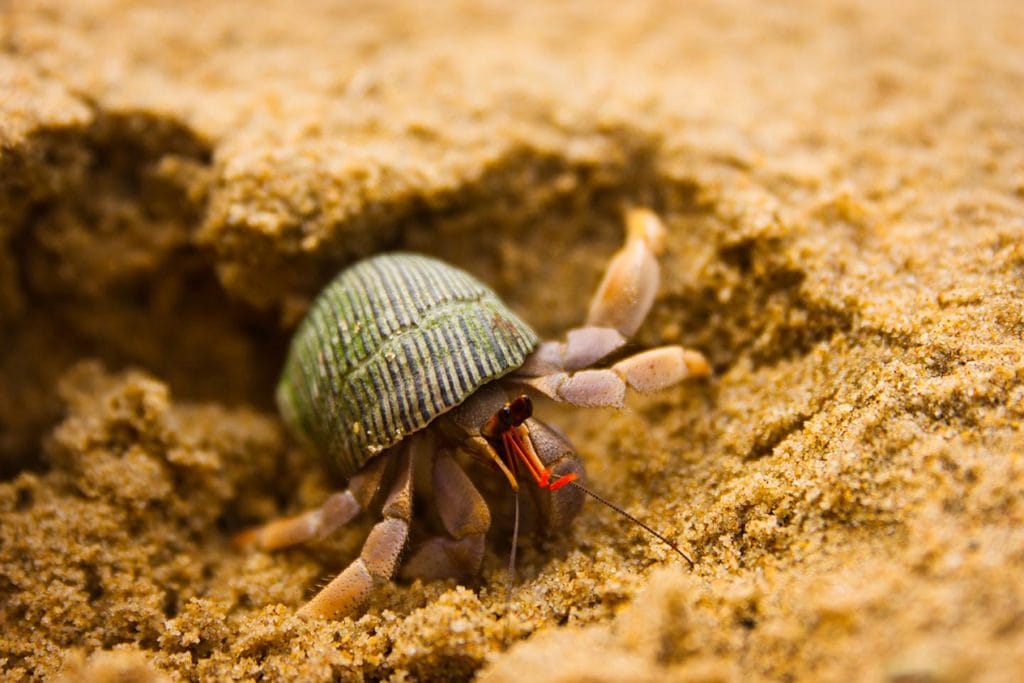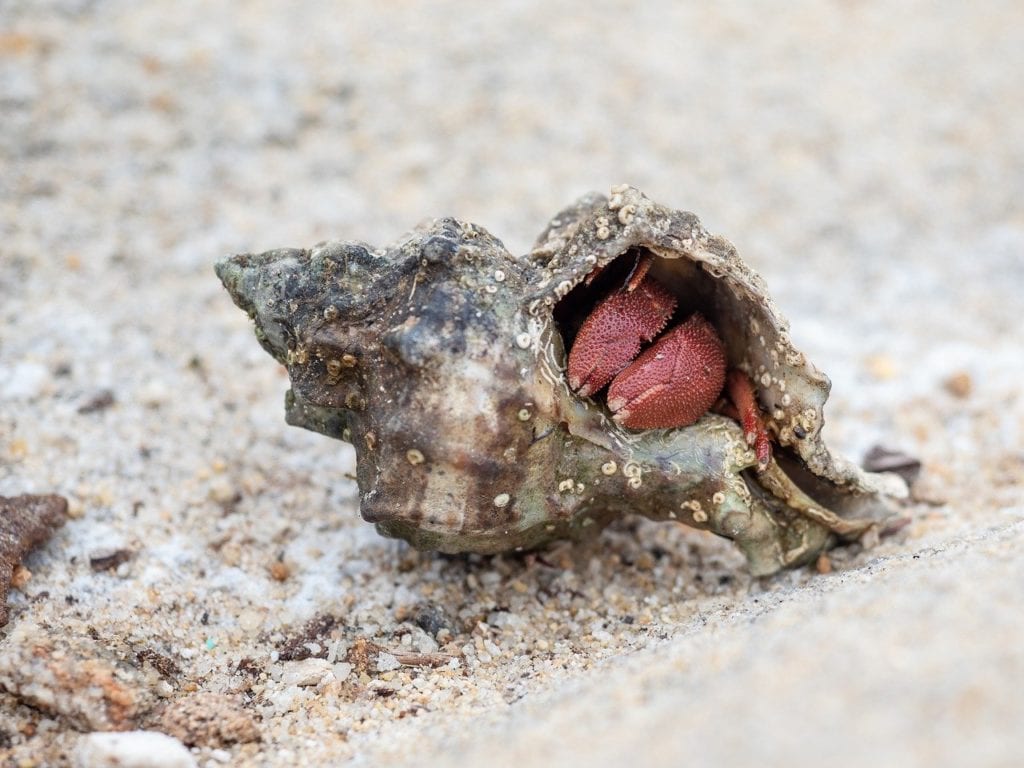How to Tell if a Hermit Crab Is Dead

Hermit crabs have become popular pets in recent years because they are docile, easy to care for, and fascinating to watch. These adorable crabs have evolved to live on land, using discarded, empty shells for protection and homes. Hermits can live for up to 15 years with the right care and are social crabs that enjoy the company of the same species.
Hermit crabs molt regularly, and during the process, they can appear quite limp and lifeless, leading many inexperienced owners to presume that they're dead. It can be difficult for even experienced owners to tell the difference. If there's no movement from your crab for a few days or weeks, it's perfectly natural to wonder if they may have died.
There are a few simple ways to tell, though. In this article, we go through the ways to find out whether your Hermit crab has kicked the bucket or is simply molting. Let's get started!

Hermit crab molting
Molting is a natural and vital part of the life of a Hermit crab. Similar to reptiles with their skin, a Hermit crab's body outgrows their exoskeleton, and they need to shed it. An adult Hermit will typically molt once every 18 months or so but may do so more frequently before adulthood. It can vary from crab to crab how long the process takes, as the larger the Hermit, the longer the whole process takes.
For an average-sized crab, the process can take 4–8 weeks in total, during which time, they may stay almost immobile. Their bodies become stiff, preventing them from standing up or moving, and they can easily be mistaken as dead.
It's important to not interfere with this process, and don't try to pick your crab up or help them along, as you could severely injure them. There are a few simple ways to tell when your Hermit is getting ready for this process. The signs of impending molting include the following.
Digging
Hermits tend to dig into soft sand before they molt, as they often bury themselves in the sand during most of the molting process. It's a good idea to check your aquarium temperature if you see this happening, though, as they may simply be attempting to escape from inadequate conditions.
Increased appetite
Since Hermit crabs will not eat much, if at all, during the molting process, they will eat more just before molting begins to store up extra fat and nutrients. Unfortunately, Hermit crabs are nocturnal, so you may not notice this happening.
Change in color
Your Hermit's exoskeleton will dull in color in the days before molting begins to an ashy, almost translucent tone, and their eyes may appear dull too. The tips of their legs and claws often turn white, although this is not always the case.

Regeneration of limbs
If your Hermit crab is missing any limbs, they may begin to grow them back just before the molting process. These new limbs appear as a gelatinous protrusion that will gradually expand and become the crab's new limb after molting.
Stress
It's not uncommon for Hermit crabs to hide away under the substrate in their tank when they feel threatened or stressed. This is especially common with new Hermit crabs that have been introduced from another environment, and it may take them time to adjust. They may display a few of the same signs as molting, including lethargy, decreased appetite, and digging, so keep an eye on your crab. It may just take a week or two for them to adjust.

Is my Hermit crab dead?
Like any pet, there will come a time when your crab will not be molting, hiding, or stressed, and their time has unfortunately come. If you've noticed that your Hermit crab has not been moving or eating for a while, the first thing to do is the smell test: Your crab will emit a foul, fishy-smelling odor if they have died. That said, this is still not a sure sign because they may smell while molting too, albeit not as strongly.
You'll also notice their body hanging partially outside of their shell. While this is also common during molting, if you look closely at a molting crab, you may notice faint signs of movement, like twitching. Try to look closer, and if there is absolutely no movement and a foul smell, your crab is most likely dead. It's important not to rush to conclusions, though, as so many people mistake a molting crab for a dead one.
Since Hermits are nocturnal, you may not see any movement from them during the day. Check for any tracks or other signs of movement, although do not attempt to move your crab just yet, even if you suspect that they are dead. The only definitive way to tell if your crab is dead is if you see mold start to appear. Assume that your crab is molting for 2 to 3 months, just to be safe, but if nothing has changed after that period, you can safely assume that they are gone.
Related Read: Do Hermit Crabs Make Good Pets? (An Honest Answer)

Final Thoughts
Hermit crabs will molt every 18 months or so, and if you pay close attention to the signs, it's usually easy to see when they are about to begin the molting process. Of course, you may not have noticed the initial signs, and in that case, it's best to assume that your crab is molting rather than dead. If they have not moved or surfaced from the substrate for 2–3 months and you can smell a fishy, rotten smell, they are unfortunately most likely dead.
Featured Image Credit: Pixabay

Oliver (Ollie) Jones – A zoologist and freelance writer living in South Australia with his partner Alex, their dog Pepper, and their cat Steve (who declined to be pictured). Ollie, originally from the USA, holds his master's degree in wildlife biology and moved to Australia to pursue his career and passion but has found a new love for working online and writing about animals of all types.
Contents
- Hermit crab molting
- Digging
- Increased appetite
- Change in color
- Regeneration of limbs
- Stress
- Is my Hermit crab dead?
- Final Thoughts
- Related
How to Tell if a Hermit Crab Is Dead
Source: https://petkeen.com/hermit-crab-dead-or-molting/